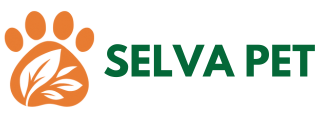Teaching your dog to pee in the right place in 7 days can feel tricky, but it doesn’t have to be hard. In this article, you will discover key tips and techniques that make the process easier for both you and your puppy. Get ready to learn about creating a potty training schedule, using positive reinforcement, avoiding common mistakes, and celebrating your puppy’s success. Let’s get started and help your puppy learn this important skill!
Understanding Your Puppy: The First Step in Learning How to Teach Your Dog to Pee in the Right Place in 7 Days
When I first brought my puppy home, I was filled with excitement and a bit of anxiety. Understanding your puppy is crucial, especially when it comes to potty training. Each puppy is unique, with its own personality and quirks. So, let’s dive into the world of puppy behavior.
Puppies naturally eliminate in specific areas, as they instinctively want to keep their living space clean. If you catch them sniffing around or circling, it’s a clear sign they need to go. Recognizing these signals is your first step in successful potty training.
Moreover, age plays a significant role in how quickly your puppy will learn. Younger puppies have smaller bladders and need to go out more frequently. It’s essential to be patient and consistent; this patience will pay off in the long run.
Another aspect to consider is the breed. Some breeds are more stubborn than others. For instance, a bulldog may take longer to train than a border collie. Understanding these nuances will help you tailor your training approach.
In conclusion, getting to know your puppy inside and out is the foundation of teaching them to pee in the right place. By observing their behavior and understanding their needs, you’ll set the stage for effective potty training in just seven days.
Essential Dog Training Tips for Successful Potty Training
Now that you’ve got a grasp on your puppy’s behavior, let’s get into some essential dog training tips for successful potty training. I can’t stress enough how important consistency is in this process.
First, establish a designated potty area outside. Take your puppy to this spot every time they need to go. This repetition helps them associate that area with relieving themselves.
Next, create a routine. Take your puppy out first thing in the morning, after meals, and before bedtime. Consistency is your best friend here. Puppies thrive on routine, and knowing when to expect their potty breaks will help them learn faster.
Use a specific command when you take them out, such as “go potty.” Eventually, your puppy will associate the command with the action, making it easier for them to understand what you want.
Keep an eye on water intake. While it’s essential for your puppy to stay hydrated, monitoring when they drink can help you predict when they’ll need to go out.
Finally, be patient and stay positive. Potty training can be challenging, but with the right mindset and techniques, it can also be a rewarding experience for both you and your puppy.
Creating a Potty Training Schedule: Key to Success in 7 Days
Creating a potty training schedule is crucial for success in just seven days. I remember when I first started; I thought I could wing it. Spoiler alert: it didn’t work!
To kick things off, chart out a schedule. Start by taking your puppy out every hour during the day. Yes, it may feel like a lot, but consistency is key. As they get the hang of it, you can gradually extend the time between potty breaks.
Include meal times in your schedule, as puppies typically need to go shortly after eating. By timing their meals, you can predict when they’ll need to relieve themselves.
Consider their sleep schedule as well. Puppies usually need to go out right after waking up, providing another opportunity to reinforce the idea of going outside to pee.
Adjust your schedule as your puppy grows. As they become more reliable, you can start to space out the potty breaks. It’s all about finding that sweet spot where they can hold it longer.
Lastly, keep track of your puppy’s progress. A simple chart can help you visualize their successes and any setbacks, keeping you organized and motivated to stick to the plan.
Positive Reinforcement Training: The Secret Sauce for Teaching Your Dog to Pee
Positive reinforcement training is the secret sauce for teaching your dog to pee in the right place. I can’t tell you how much this technique transformed my training experience.
When your puppy successfully goes outside, celebrate it! Use treats, praise, or even a favorite toy as a reward. This creates a positive association with the act of going potty outside.
Timing is everything. Reward your puppy immediately after they do their business outside to help them connect the dots between the action and the reward.
Consider using a clicker or a specific word like yes to mark the behavior. This clear communication reinforces what you want them to do.
Avoid punishment for accidents indoors, as this can create anxiety and confusion for your puppy. Clean up the mess without fuss and redirect them to the right behavior next time.
Additionally, keep a journal of your puppy’s potty habits to identify patterns and adjust your training accordingly. Positive reinforcement not only makes potty training more effective but also strengthens the bond between you and your puppy.
Indoor Potty Options: Making Life Easier for You and Your Puppy
Sometimes, life gets busy, and we can’t always take our puppies outside. That’s where indoor potty options come into play. I remember the first time I had to deal with a rainy day; I was so glad I had a backup plan!
One popular option is puppy pads. These absorbent pads can be placed in a designated area of your home. When your puppy needs to go, they’ll learn to use the pad instead of your carpet.
Another option is an indoor dog potty, which mimics the outdoors. These can be pricier but often have a drainage system and can be a great long-term solution.
Whichever option you choose, consistency is vital. Just like with outdoor potty training, take your puppy to the indoor potty area frequently, especially after meals and naps.
Remember to reward your puppy when they use the indoor option correctly, reinforcing the behavior and making them more likely to use it again.
Lastly, be prepared for some accidents along the way. It’s all part of the learning process. Just stay positive and keep guiding them toward the right behavior.
Common Mistakes to Avoid When Training a Dog to Pee in the Right Place
When I first started potty training my puppy, I made a few common mistakes that set me back. Let’s go over some pitfalls to avoid, so you don’t have to learn the hard way!
One major mistake is not being consistent. Skipping potty breaks or not using the same commands can confuse your puppy. Stick to your schedule and routines as much as possible.
Another mistake is failing to supervise your puppy. Accidents happen when we’re not paying attention. Keep an eye on them, especially during the early stages of training.
Don’t underestimate the power of scent. If your puppy has had an accident indoors, they may return to that spot. Clean thoroughly with an enzymatic cleaner to eliminate any lingering odors.
Avoid using negative reinforcement. Yelling or scolding your puppy for accidents can create fear and anxiety, making the training process even more challenging.
Lastly, don’t rush the process. Every puppy learns at their own pace. Celebrate small victories and be patient with setbacks. By avoiding these common mistakes, you’ll set yourself and your puppy up for success in potty training.
Dog Behavior Modification: Understanding Why Your Puppy Might Struggle
Understanding why your puppy might struggle with potty training is essential. I remember feeling frustrated, wondering why my puppy wasn’t getting it. But once I understood the reasons behind their behavior, everything clicked.
Anxiety can play a role; if your puppy feels stressed or scared, they may not want to go outside. Creating a safe and calm environment can help alleviate this.
Medical issues can also affect your puppy’s ability to hold their bladder. If you notice frequent accidents or other concerning behaviors, consult your veterinarian to rule out health problems.
Age is another factor. Younger puppies have less control over their bladders. Set realistic expectations based on their age and development.
Distractions can hinder your puppy’s ability to focus on potty training. If there are too many noises or other pets around, it can be overwhelming. Minimize distractions during potty breaks.
Lastly, consider your training methods. If your approach isn’t resonating with your puppy, they may struggle to understand what you want. Be flexible and willing to adjust your techniques as needed.
By understanding these factors, you’ll be better equipped to help your puppy succeed in their potty training journey.
Troubleshooting: What to Do If Your Dog Isn’t Learning to Pee in the Right Place
If your puppy isn’t learning to pee in the right place, don’t panic! I’ve been there, and there are several troubleshooting steps you can take to get back on track.
First, reevaluate your potty training schedule. Are you taking your puppy out frequently enough? It may be time to increase the number of potty breaks throughout the day.
Observe your puppy’s behavior. Are they showing signs that they need to go but still having accidents? This could indicate they’re not fully understanding where to go. Reinforce your commands and take them to the designated potty area more often.
Check for any changes in your puppy’s environment. New people, pets, or changes in routine can cause stress. Make sure your puppy feels secure and comfortable in their surroundings.
If your puppy is still struggling, consider consulting a professional dog trainer. Sometimes, an expert can provide insights and techniques that may not have occurred to you.
Lastly, be patient and stay positive. Potty training is a journey, and every puppy learns at their own pace. Celebrate small victories and keep encouraging your puppy.
Celebrating Success: How to Keep Your Dog Motivated During Potty Training
Celebrating success is a crucial part of keeping your dog motivated during potty training. I remember the joy I felt every time my puppy went outside and did his business.
Make a big deal out of their successes! Use enthusiastic praise, treats, and even a little dance if you’re feeling extra celebratory. This positive reinforcement will encourage them to continue the behavior.
Create a reward system. For example, if your puppy goes outside successfully for a week, treat them to a special toy or extra playtime. This creates an incentive for them to keep up the good work.
Consider keeping a potty training journal. Tracking your puppy’s progress can help you see how far they’ve come. This can be motivating for both you and your puppy.
Lastly, maintain a positive attitude. Potty training can be frustrating at times, but your energy affects your puppy. Staying upbeat and encouraging will help them feel more confident and motivated.
By celebrating success, you’ll create a positive potty training experience that strengthens your bond with your puppy.
Final Thoughts on How to Teach Your Dog to Pee in the Right Place in 7 Days
In conclusion, teaching your dog to pee in the right place in just seven days is entirely achievable with the right approach. Understanding your puppy, establishing a routine, and using positive reinforcement are all crucial elements.
Remember to be patient and consistent throughout the process. Every puppy is different, and some may take longer to learn than others. Celebrate small victories and keep your puppy motivated.
If you encounter challenges along the way, don’t hesitate to troubleshoot and adjust your methods. With time, dedication, and a little love, you’ll successfully teach your puppy to pee in the right place.
So, roll up your sleeves, grab those treats, and get ready for an exciting week of potty training. Your puppy will thank you for it!



